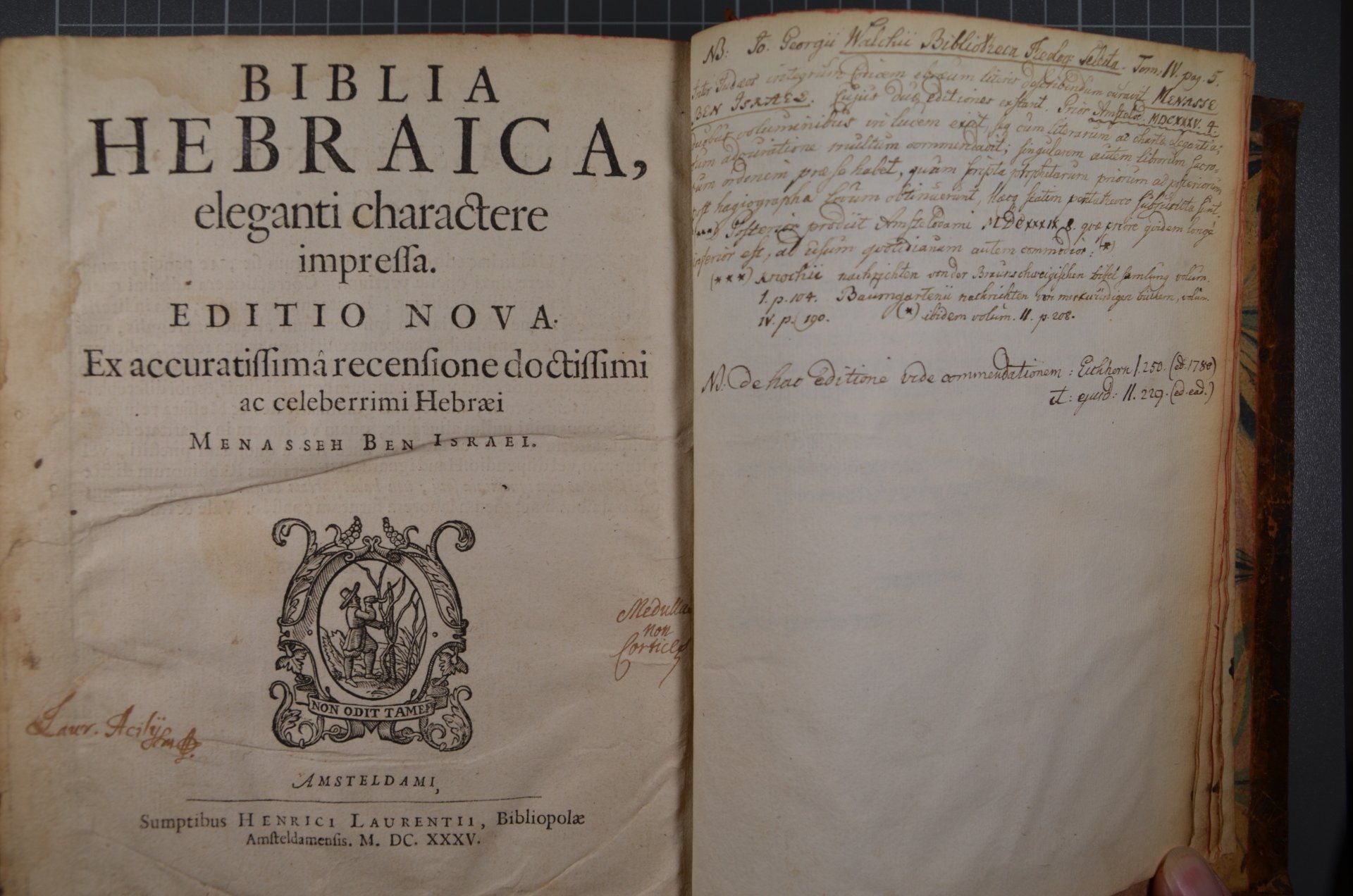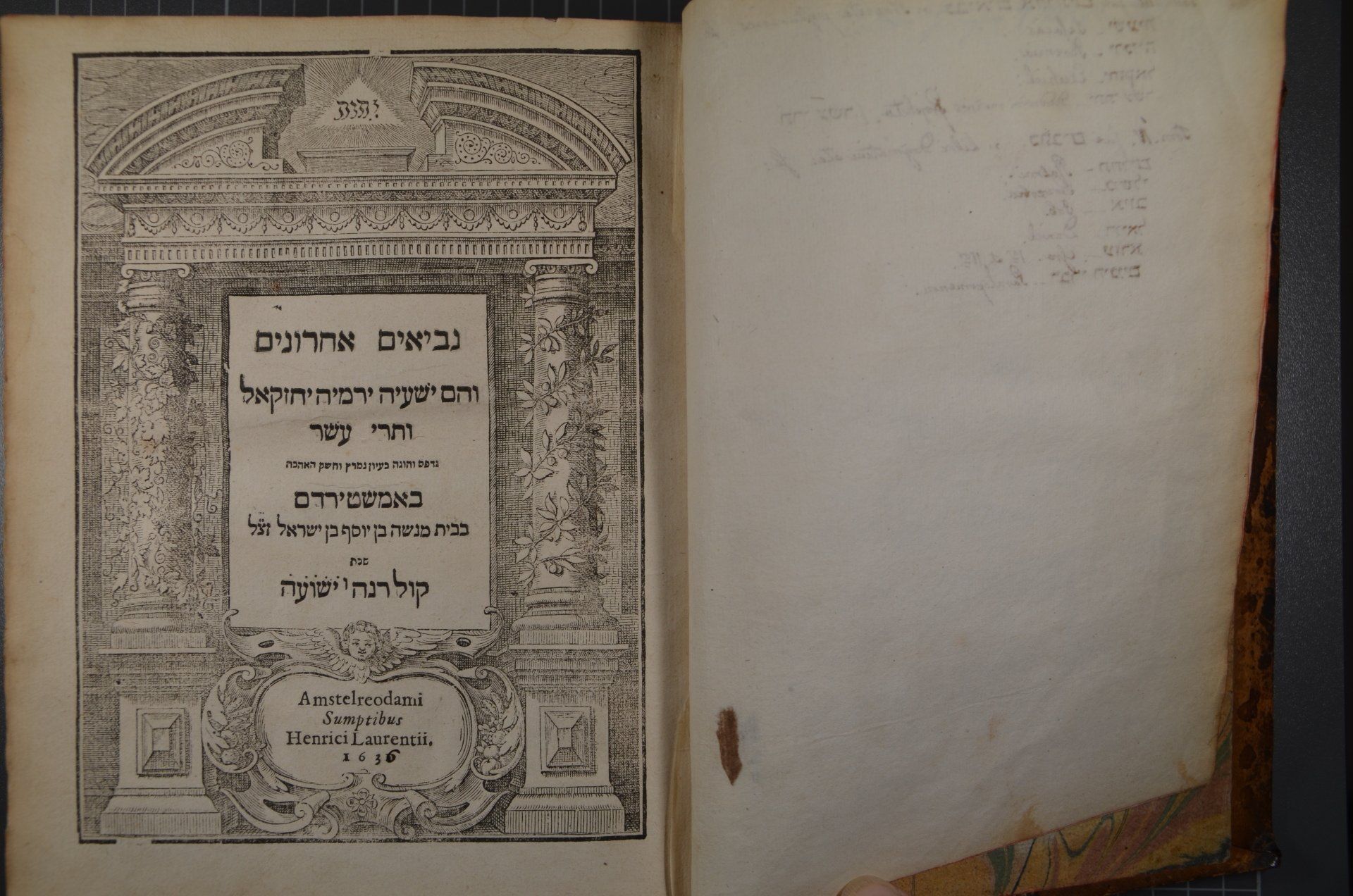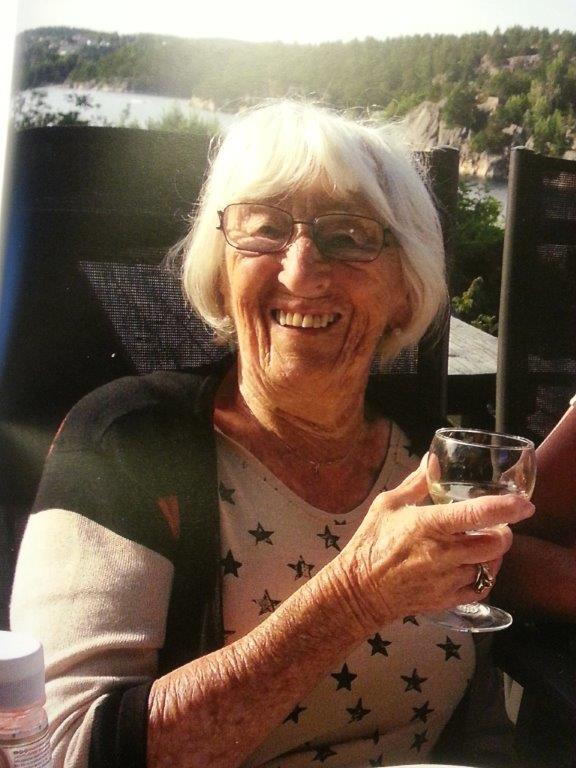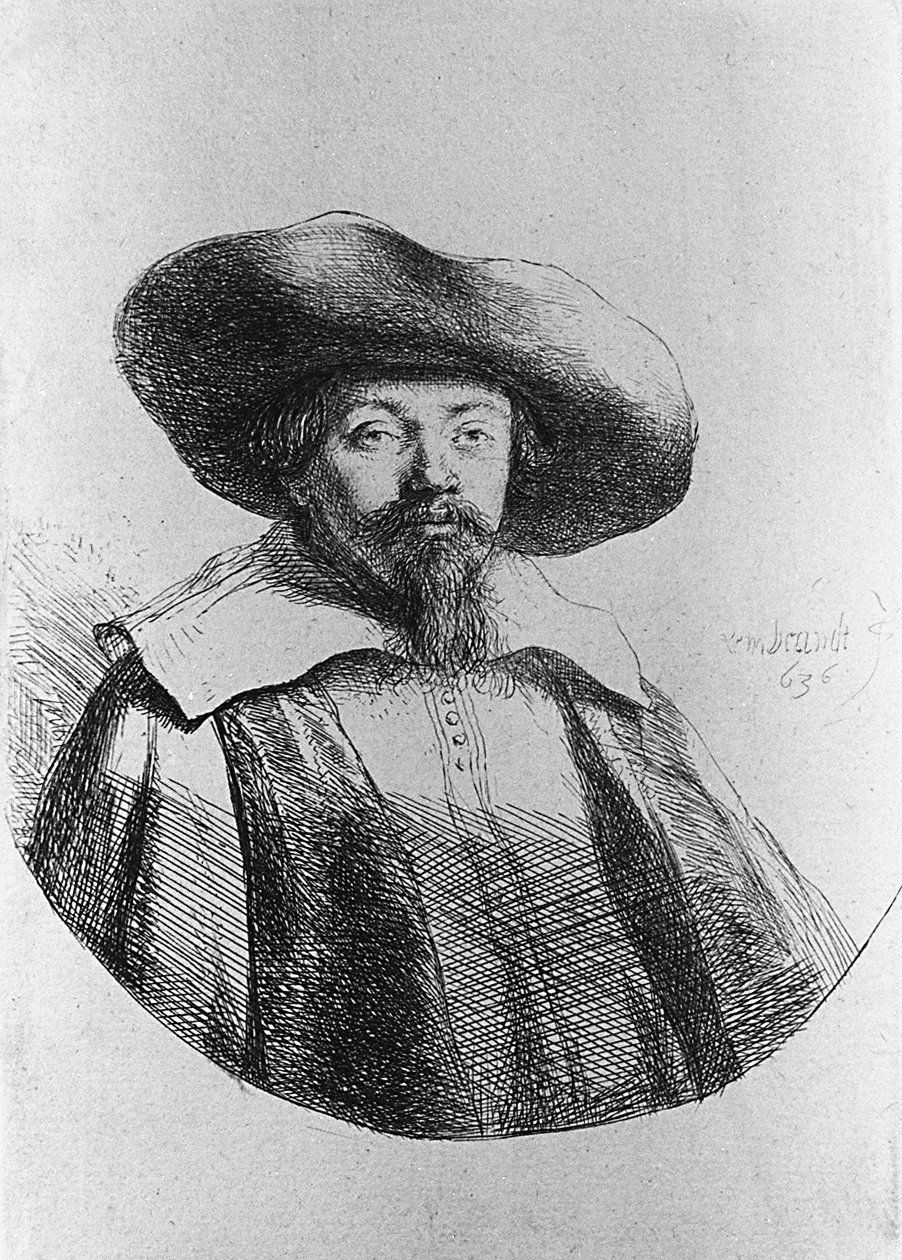Artifact of the Month for September 2018
Biblia Hebraica
Solveig Levin (born 1914)
Solveig Levin is born Desember 29th 1914, the oldest of four children to Mendel and Elise Bernstein. She spent her first childhood years at Grünerløkka (Oslos eastend), where her father ran a manufacturing business. When Solveig was 6 years old the family moved to St. Hanshaugen. She attended Nissens Pikeskole, which was the first Norwegian school to offer middle school exam and high school diploma for girls. After high school, Solveig took a one-year commercial education at Wang's business school, while working as a manager in her father's store. I 1936 she went to Finishing School for girls in Hampstead, London, to learn English. Two years later Solveig married Robert Levin, and the following year their daughter Mona was born. The family managed to escape to Sweden in November 1942, where their second daughter Sidsel was born in 1944. The family returned to Norway in June 1945.
I 1965 Solveig established, together with her husband Robert and their friends Kåre Siem og Kjell Bækkelund, the first of five major music kindergartens administered by Solveig. Solveig Levin is Associated Honorary Member of the Norwegian Association of Artists. She has a wide network of friends and family and holds a great knowledge of Norwegian-Jewish life and history, to which this museum is profoundly grateful.
For the whole story of Solveig Levin’s life, cf. Mona Levins book: Mors historie - en familiesaga.
Menasseh Ben Israel (1604-1657)
Menasseh Ben Israel (born Manoel Dias Soeyro, 1604 in Madeira, d. November 20 1657 in Middelburg, Holland) was a sefardic rabbi, scientist, writer, diplomat, bookprinter and publisher. He was also the founder of the first Hebrew printing house in Amsterdam in 1626. He was descendant of so-called conversos, that is, Jews who had converted to Catholicism in order to avoid being expelled from Spain (1492) and Portugal (1496). Yet, they kept their Jewish traditions alive, albeit in secret. The first conversos came to Amsterdam in the 1590s. During the next ten years they established a church and a Jeshiva (Jewish Learning Center) where Menasseh received his religious education. A main task for the congregation was the "rejudaization" of conversos. Many of them did not have first-hand knowledge of Tanakh (the Hebrew Bible), which in Spain and Portugal was only allowed in Latin editions. A Hebrew Bible was therefore absolutely necessary in the process of repatriation of Judaism. Newcomer conversos, however, first needed to learn Hebrew. Menasseh's project was then to provide a clearer Hebrew text that could encourage conversos to learn Hebrew to follow the reading of the Torah and the Jewish liturgy. Menasseh modified his "New Edition" of the Hebrew Bible on several occasions and also published more editions during the 1630s.
This two-bind edition of Biblia Hebraica was printed in Amsterdam in 1635 and is a gift to the Oslo Jewish Museum from Solveig Levin. The books were given to Solveig's father, Mendel Bernstein, by Else Heuch (born Holst). They had then belonged to (her husband's grandfather), bishop of Stavanger, J. C. Heuch (1838-1904).


Photo: This two-bind edition of Biblia Hebraica was printed in Amsterdam in 1635 and is a gift to the Oslo Jewish Museum from Solveig Levin. The books were given to Solveig's father, Mendel Bernstein, by Else Heuch (born Holst). They had then belonged to (her husband's grandfather), bishop of Stavanger, J. C. Heuch (1838-1904).

Photo: Solveig Levin, 2018

Photo: Portrait of Menasseh Ben Israel. Painted by Rembrandt in 1636.


